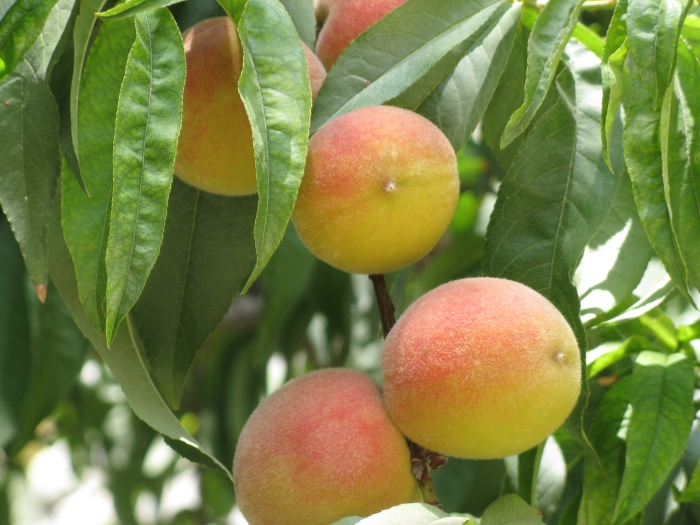Peach
(Prunus persica)
Peach (Prunus persica)
/
/

Yair Haklai
CC BY-SA 3.0





































































































Estimated Native Range
Summary
Peach trees are valued for their edible fruit and ornamental qualities, including their spring blossoms in shades of yellow, pink, purple, red, and white. They are showy and often fragrant, attracting pollinators. Peaches thrive in full sun and require well-drained soil with consistent moisture for optimal fruit production. They are susceptible to a range of diseases, including peach leaf curl and brown rot, as well as pests like the peach tree borer. Regular pruning and disease management are essential for healthy trees. Peaches are commonly used in home gardens and commercial orchards. Due to their potential invasiveness, it is important to check local guidelines before planting.CC BY-SA 4.0
Plant Description
- Plant Type: Tree
- Height: 15-20 feet
- Width: 10-12 feet
- Growth Rate: Rapid
- Flower Color: Pink
- Flowering Season: Spring
- Leaf Retention: Deciduous
Growth Requirements
- Sun: Full Sun
- Water: Medium
- Drainage: Medium
Common Uses
Bee Garden, Bird Garden, Border Plant, Butterfly Garden, Edible*Disclaimer: Easyscape's listed plant edibility is for informational use. Always verify the safety and proper identification of any plant before consumption., Fragrant, Rabbit Resistant, Showy Flowers
Natural Habitat
Originally native to Northwest China and now cultivated in temperate regions worldwide
Other Names
Common Names: Melocotón , Pfirsich , Pêche
Scientific Names: Prunus persica , Persica nucipersica , Prunus persica var. nectarina , Prunus persica var. nucipersica , Prunus persica subsp. nucipersica , Amygdalus persica , Persica vulgaris , Prunus persica var. persica , Prunus persica var. laevis , Prunus persica var. compressa
GBIF Accepted Name: Prunus persica (L.) Stokes